Zebrunner is a test automation management platform that helps to build effective Quality Assurance and fix issues faster with rich artifacts and live dashboards.
Zebrunner was officially released in September 2020 as a single tool that accumulates all test results in one place, assists with execution and analysis, and provides clear quality reports for management.
It has evolved into an advanced solution for scalable test execution, smart reporting, and managing QA teams' performance. It now allows its users to save time and effort on test automation. With Zebrunner, you can build E2E automation thanks to their own Carina testing framework.
Who Is Zebrunner For?
Zebrunner is mainly used by QA engineers, managers, and team leads to speed up test execution and automate the process of test results analysis.
Automation QA engineers can use Zebrunner to run high-speed parallel tests and analyze the failures with logs, screenshots, and videos. They can also use it to detect flaky tests with the help of a test history panel and understand the reasons for failure with AI/ML.
Manual QA engineers can use Zebrunner to achieve traceability between automated tests and manual test cases, and quickly submit new bugs to Jira. They can also use Zebrunner to create a data summary for a certain period and share it with the team.
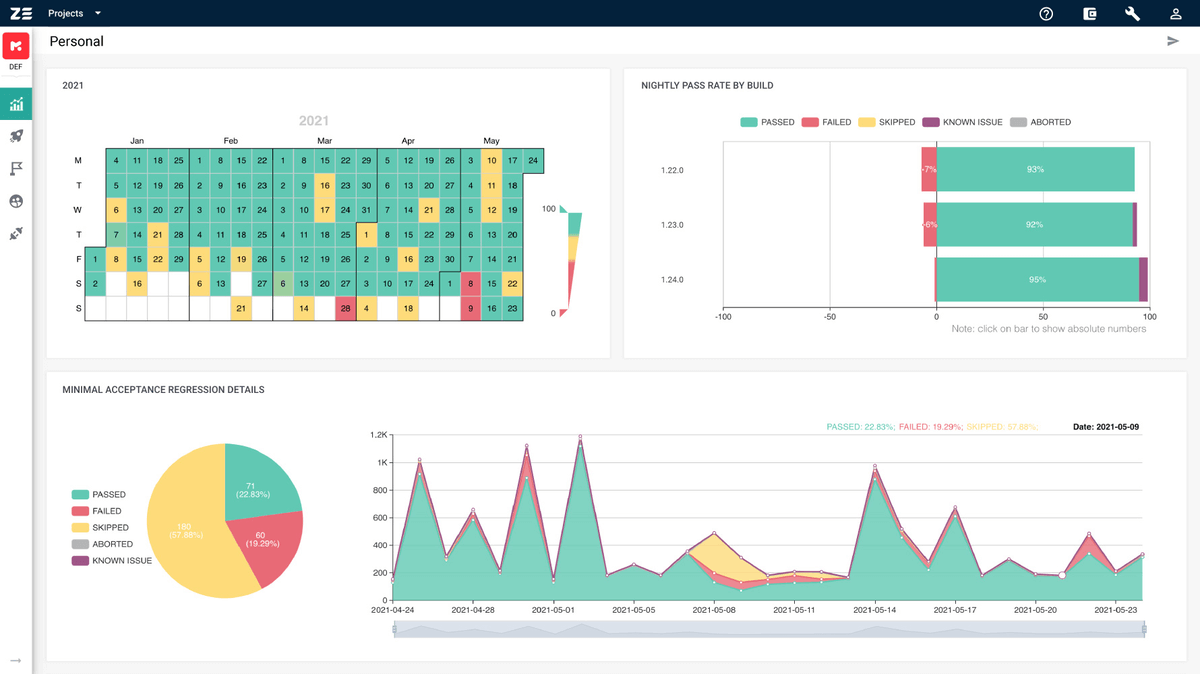
QA managers can use Zebrunner to create custom reports for C-level and customers, plan timelines for releases, and track testing progress and product quality.
Developers can use Zebrunner to check test failures or get a pre-analysis of feature releases to reduce the number of bugs during staging and production.
What Challenges Does Zebrunner Help Solve?
Challenge 1: Slow test execution
Many companies run tests in their own execution environments with limited scalability. If the product is covered by 1000+ automated tests, the execution time may take over 8 hours. This results in delays in releases, requiring extra forces and extra budgeting for the project team.
Zebrunner Engine helps to run tests faster with parallel execution in its own Cloud or On-premise (up to 1000 threads in less than 15 mins). So any team can execute tests quickly, detect bugs earlier, and release with confidence.
Challenge 2: Root cause detection is time-consuming
After the test execution, many QA engineers suffer from analyzing test failures. Imagine, 100 autotests failed out of 1000. Many hours can be spent on root cause analysis and submitting the bugs for fixing.
Zebrunner shortens this time by using AI/ML automatic classification to find reasons for failure and streamlining the process by allowing direct linking of the results to the bug in Jira. Zebrunner is excellent for QA managers who need to track multiple teams. However, if your teams are already heavily invested in Jira, test management tools optimized for Jira can offer additional collaborative benefits.
Challenge 3: Compiling statistics for trend reports is a hassle
Creating quality trend reports for a customer or C-level executive usually requires collecting all the statistics from different sources, analyzing them, and building trend graphics with relevant metrics. This can be a time-consuming manual process.
With Zebrunner, creating quality trend reports takes just a few minutes. QA Managers can build and customize dashboards with widgets that pull the data automatically. Additionally, live dashboards are always up-to-date, so no data will be missed.
Challenge 4: Tracking multiple QA teams can be complicated
A QA director who manages several QA teams in a big project needs to check the health of the QA process by team. Collecting info from QA leads directly is inefficient and verbal reports allow for miscalculations and human error.
Zebrunner helps QA management staff gain 24/7 access to QA processes, including timelines for releases, test coverage, as well as ROI and KPIs, so they can identify gaps in team productivity and optimize the workload.
What’s On The Zebrunner Roadmap?
Since Zebrunner was launched in 2020, the product has continued to evolve.
In 2021, Zebrunner rolled out several new features, such as:
- Project management
Allows several testing teams with a different toolset to work in a single workspace
- Milestones
Help to group test runs logically and track timelines for upcoming feature releases
- Improved AI/ML for test analysis
Automatically categorizes failure reasons after several rounds of training
- Ability to submit issues to Jira
Provides a quick way to create a Jira issue right after detecting the bug via Zebrunner
And the product roadmap for the coming months includes the following updates:
- Extended launcher’s functionality
Test run configuration will be available for any testing framework. Configure presets for your team and launch tests in a click.
- Zebrunner Engine as a single solution
Zebrunner Engine will become a separate tool to help increase the speed of test execution even for parallel tests.
Zebrunner Features Overview
To get an idea of how Zebrunner works, here’s a tour of the main features and how they can help you streamline your testing process.
1. Scalable Test Execution
Run tests in Zebrunner Cloud with a high speed. Execute up to 1000 tests in parallel in less than 15 minutes via Zebrunner’s own Selenium Hub, or integrate with other providers to view automated test results directly in Zebrunner.
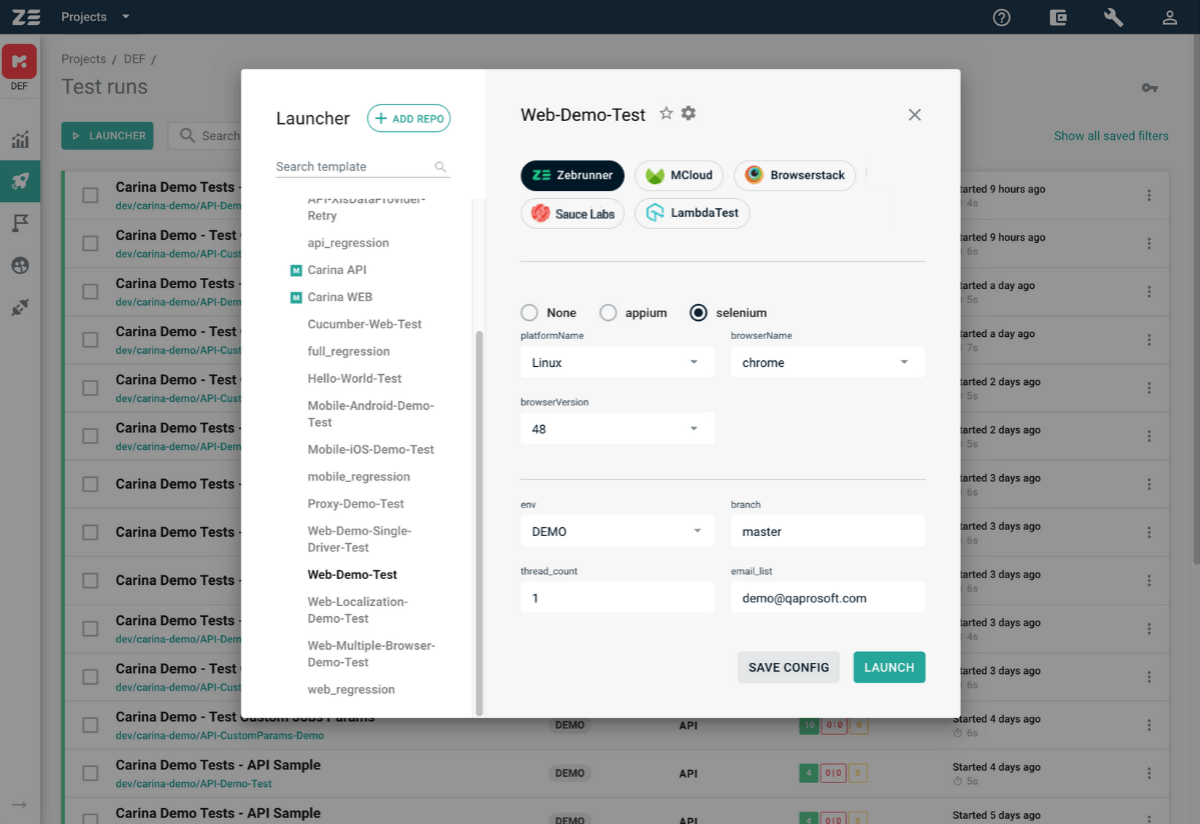
2. Automated Test Results Analysis
Zebrunner helps QA engineers check failed tests and find out their reasons with rich test artifacts (test logs, screenshots, videos). You can link test results to bugs in Jira and GitHub and detect stability issues with the test history panel.
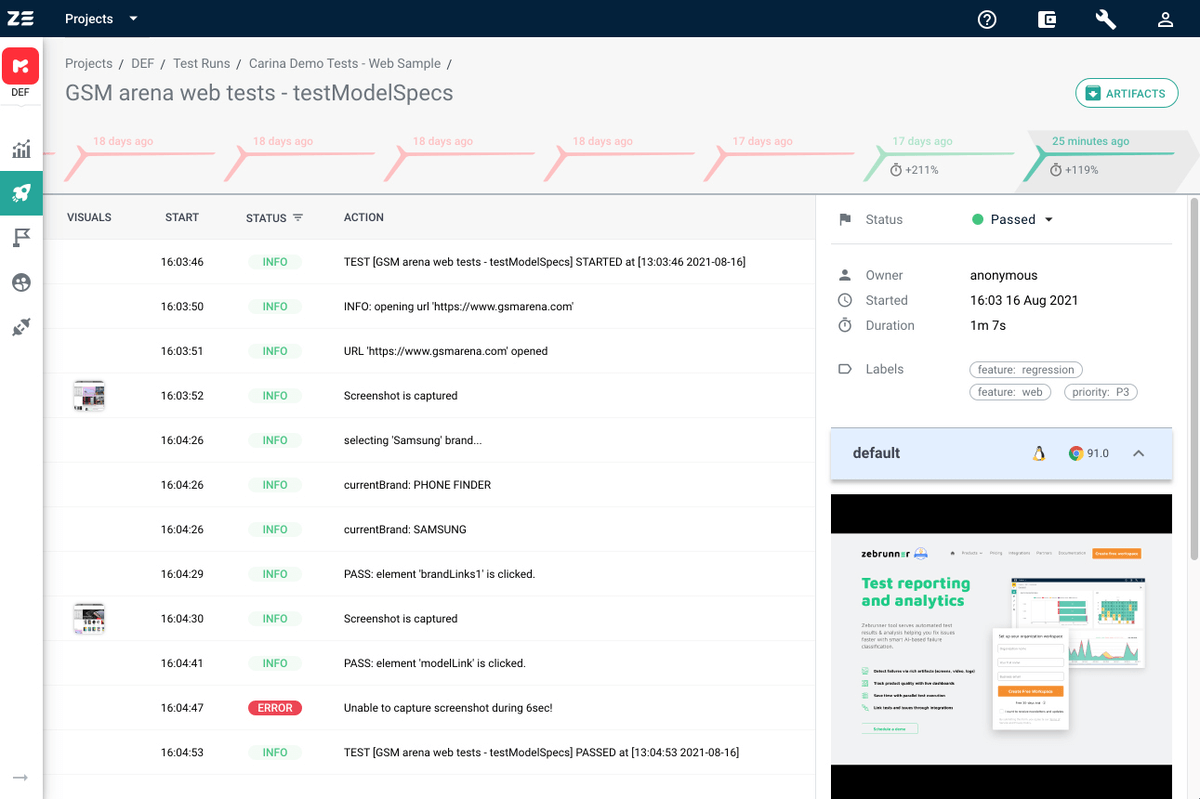
3. AI/ML Failure Reasons Classification
Zebrunner users can automate failure analysis with this feature. Every time a test fails, AI/ML assigns a certain failure category depending on the stack trace. Every team can train the system by accepting or changing the AI/ML assignment to increase the accuracy to up to 100%.
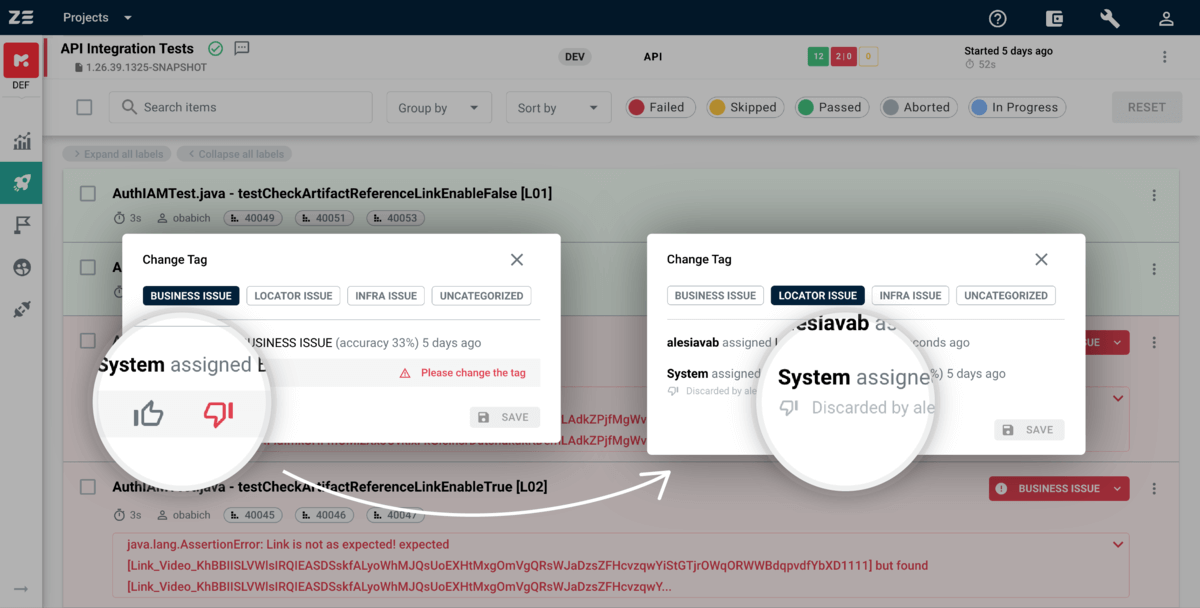
4. Live Dashboards With Extended Metrics
Zebrunner tracks pass rates and test coverage. Users can analyze team ROI and testing performance with the metrics and widgets available. Zebrunner allows customization of an unlimited number of dashboards.
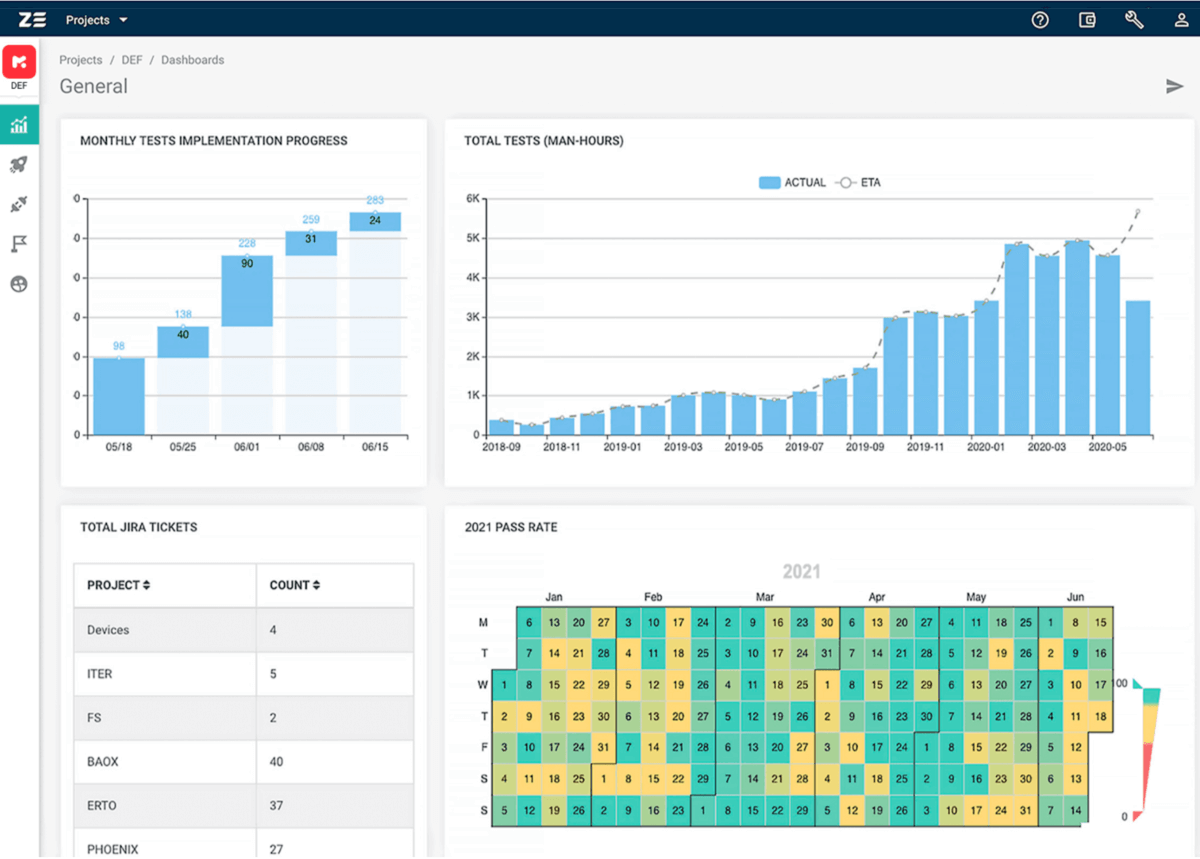
5. Project Management
Zebrunner allows QA management staff to track the progress of several testing teams in one place with strict access permissions for users. Set up integrations with 3rd party tools for each project separately, launch test runs, and create custom reports inside every project.
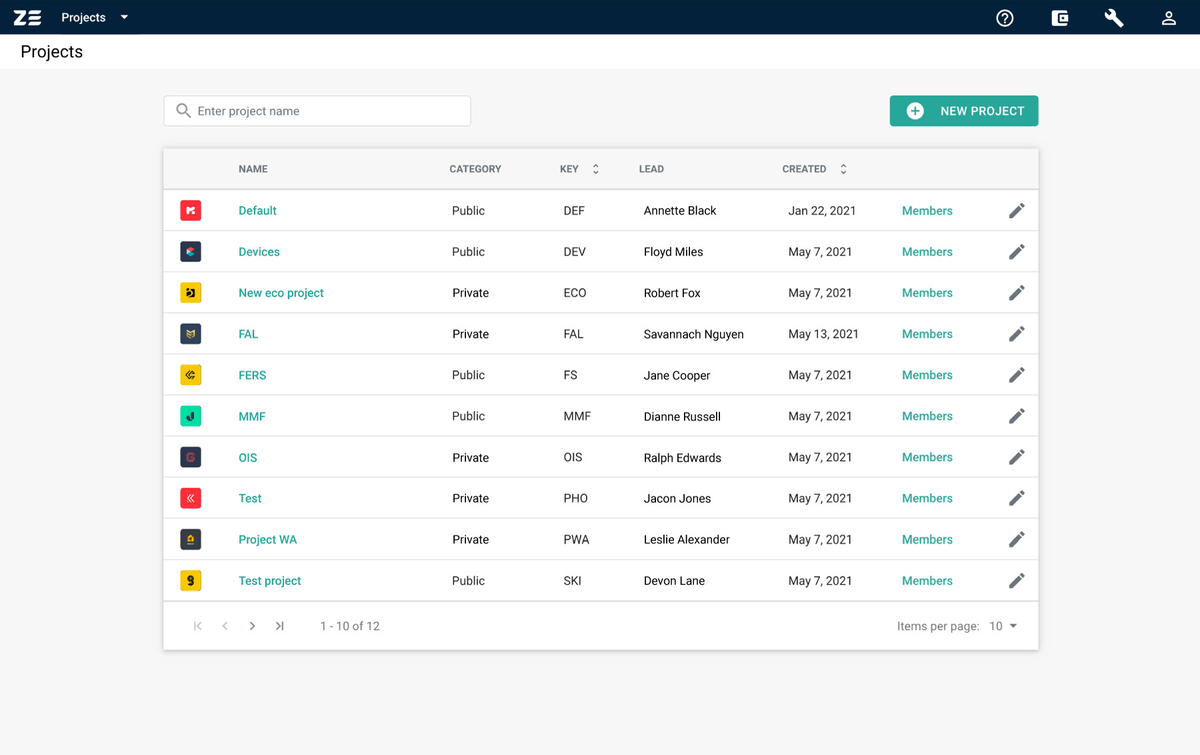
6. Milestones
In Zebrunner, milestones help QA managers organize test runs for effective planning and progress tracking.
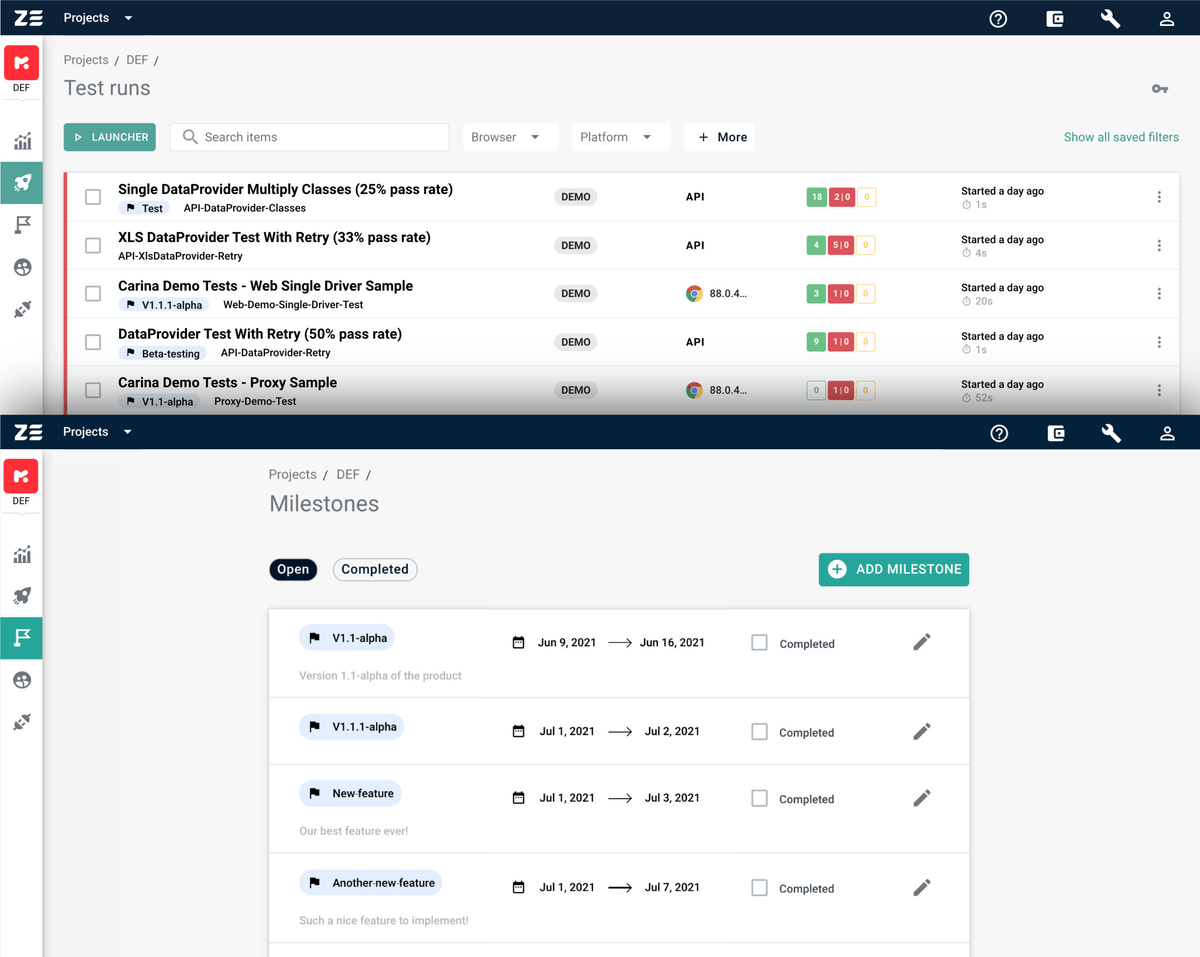
Zebrunner vs Perfecto
Zebrunner and Perfecto are two competitors that provide solutions for effective test reporting and analysis. They both offer multiple integrations, smart dashboards, and failure analysis functions. The highlight here would be Zebrunner’s test case ownership feature and its ability to automatically detect issues and classify failure reasons with AI/ML.
Zebrunner’s pricing model also differs from Perfecto’s; Zebrunner doesn't bill based on the number of parallel tests run.

Zebrunner Integrations
You can embed Zebrunner into any automation process—it supports the most popular test automation frameworks like TestNG, JUnit 4, JUnit 5, PyTest, and Cypress, as well as execution providers like Sauce Labs, LambdaTest, and Browserstack.
Zebrunner also integrates with Jenkins as a CI/CD tool; TestRail, Zephyr and XRay for mapping automated test cases with manual scenarios; Jira and GitHub for tracking and managing bugs; and Slack and Microsoft Teams for quick notifications on test statuses. Zebrunner also allows access to the workspace via SSO providers like Onelogin and Okta.
Furthermore, the REST API enables users to integrate with any other application.
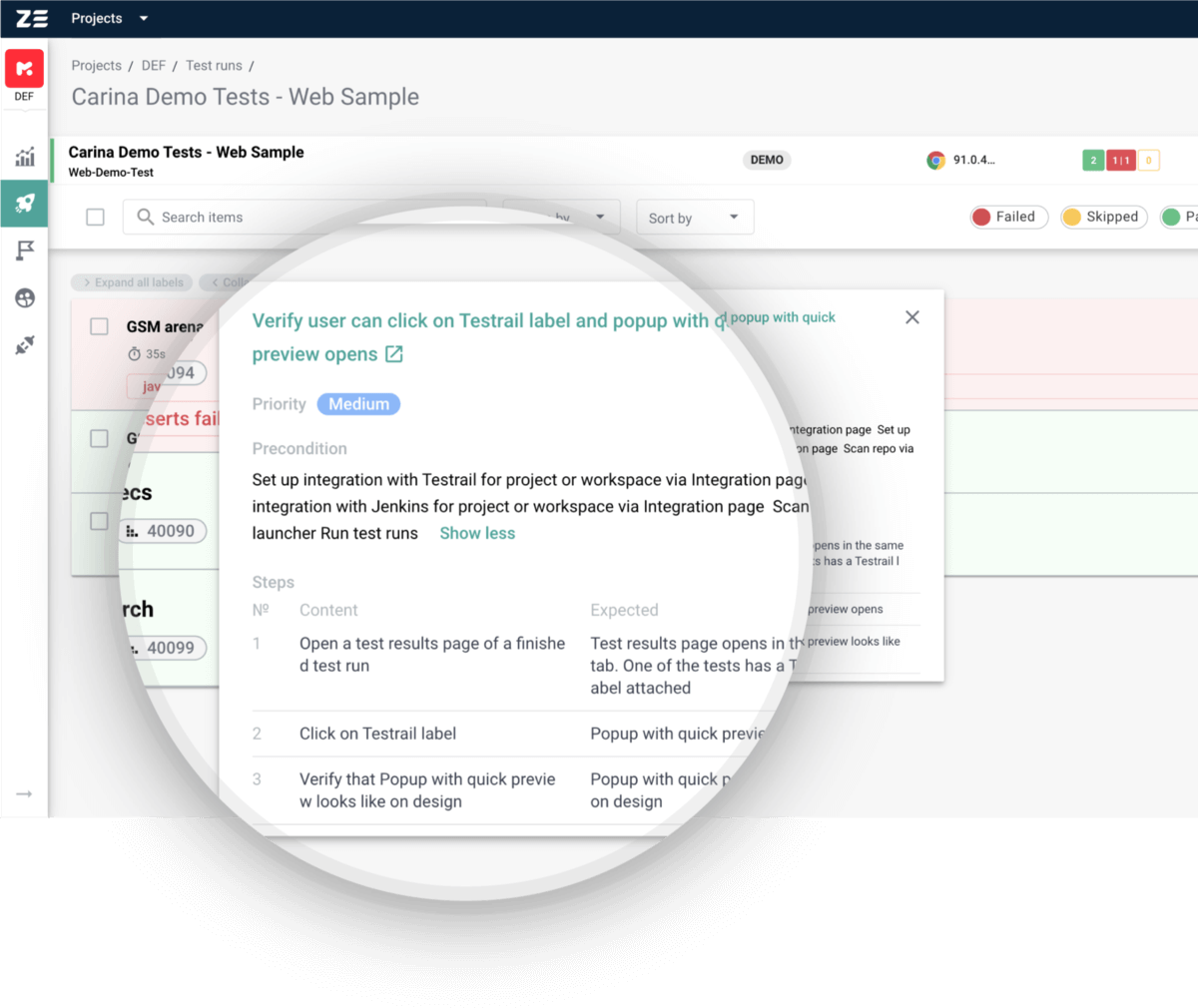
Zebrunner Pricing
Zebrunner offers several pricing plans that will cover any company’s needs. Zebrunner pricing mainly depends on the number of projects and users and starts at US$999.00 per month. Zebrunner offers a 15% discount on annual plans. They also offer a free 14-day trial with access to premium features.
Find out more about Zebrunner pricing here.
Related Read: LEADERSHIP IN TEST: MANAGING PERFORMANCE TESTING



